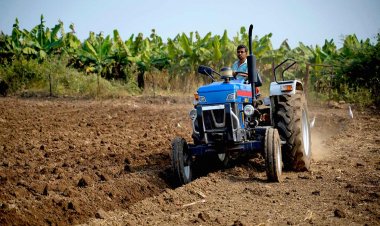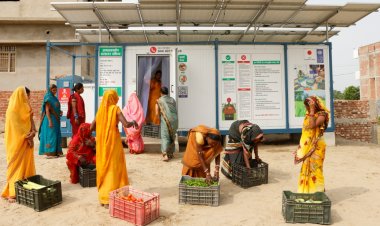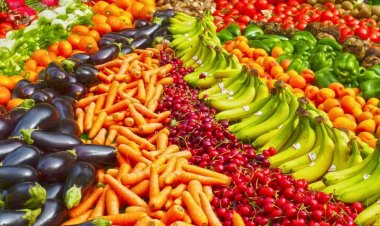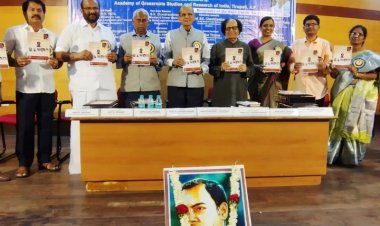Floods wash away hopes of drop in inflation
Retail inflation for a dry June breached three-month high of 4.81 per cent even when vegetable prices showed a negative print of 0.93 per cent. Yes, don't be surprised vegetable prices did witness a negative trend in June amidst outcry on tomato prices, getting worse in July. We could somehow digest the tomato tensions but then floods in Himachal Pradesh, Uttarakhand, Punjab, Haryana, parts of Uttar Pradesh, Assam and Bihar would have done immense damage to vegetables, besides washing away the delayed sown paddy.

Retail inflation for a dry June breached three-month high of 4.81 per cent even when vegetable prices showed a negative print of 0.93 per cent. Yes, don't be surprised vegetable prices did witness a negative trend in June amidst outcry on tomato prices, getting worse in July. We could somehow digest the tomato tensions but then floods in Himachal Pradesh, Uttarakhand, Punjab, Haryana, parts of Uttar Pradesh, Assam and Bihar would have done immense damage to vegetables, besides washing away the delayed sown paddy.
Prices in both wholesale mandis and neighborhood stores have shot up with no immediate sign of a retrieve. Traders in mandis like Azadpur in the national capital expect the price pressure to continue at least for a couple of months. So, let's brace ourselves for prices of essentials like fruits and vegetables increasing further as arrivals would drop in the mandis.
The tomato story is being digested by the homemakers as they are learning to cook without the red look; what needs to be kept constant vigil on would be other veggies like potato, onion, capsicum, green chilies, cauliflower, brinjal and all assortments in the vegetable basket. Cereals and products and pulses would be other pocket-pinching items for poor and lower middle class. In any case, inflation for cereals and products grew by 12.71 per cent in June, 2023 year-on-year. Forget the 'Big Basket' aunties who would rarely check even the rates on their e-bills! The problem is more pronounced for the poor and the lower middle-class people.
In fact, arrivals as reports come in from mandis, like Azadpur in Delhi, have been affected on dual count. One, the crops have been destroyed in several parts of these states; and secondly, the transport is thrown out of gear due to washing away of highways in the hilly states while motorways remain submerged in Punjab and parts of Haryana. Himachal Pradesh, one of the major producers of vegetables like tomatoes and fruits has been thrown out of gear because of washing away of hilly roads.
Extreme weather is playing havoc with our agriculture. The impact of the weather extremities is being felt across other key sectors of the economy, more so for the states like Uttarakhand, which depend mostly on agriculture, including horticulture and tourism. Both these sectors have taken a big hit as weather moved between two extremes of no rains and excess rains - throwing the Monsoon calendar to the winds in the Himalayas.
Unease of living in the flood-hit states would spill over to high cost of living in other states. Take Delhi for instance, in the good old days, it would have grown some seasonal vegetables on Yamuna River bed along the stream from Wazirabad to Okhla. All that is part of history. In any case, the river is in spate creating agony and pain for the poor living in shanties while screaming reporters of reckless TV channels, goaded by their noisy anchors, were going berserk deep-knee in water.
Anyways, let's focus on our main story and that is the impact on prices. The June Y-on-Y inflation numbers, showed a three-month high of 4.81 pc despite the RBI keeping a tight leash on the interest rates. This was despite fruits and vegetables showing a small rise of 1.36 per cent and minus 0.93 per cent respectively. Fruits and vegetables have a combined weightage of about 10 per cent in the Consumer Price Index. The F & V basket is sure to shoot up in the subsequent months along with cereals and products and pulses which have already been quoting above 10 per cent on the disaggregate inflation chart.
Floods have disfigured the entire inflation mapping exercise of the RBI which thought the Consumer Price Index might return to its target of four per cent in the next few quarters. Even if the headline inflation drops because of stability in the international crude prices and foreign exchange rates, the devil of price rise would be in the details.
The prospects of Kharif do not look great. A recent report in the Rural Voice stated how the paddy sowing saw a decline of 10 per cent and Arhar by 42 per cent. It is all in the hands of weather Gods that both the government and the consumers have to look up to!
(Writer is a senior Journalist)



 Join the RuralVoice whatsapp group
Join the RuralVoice whatsapp group









































